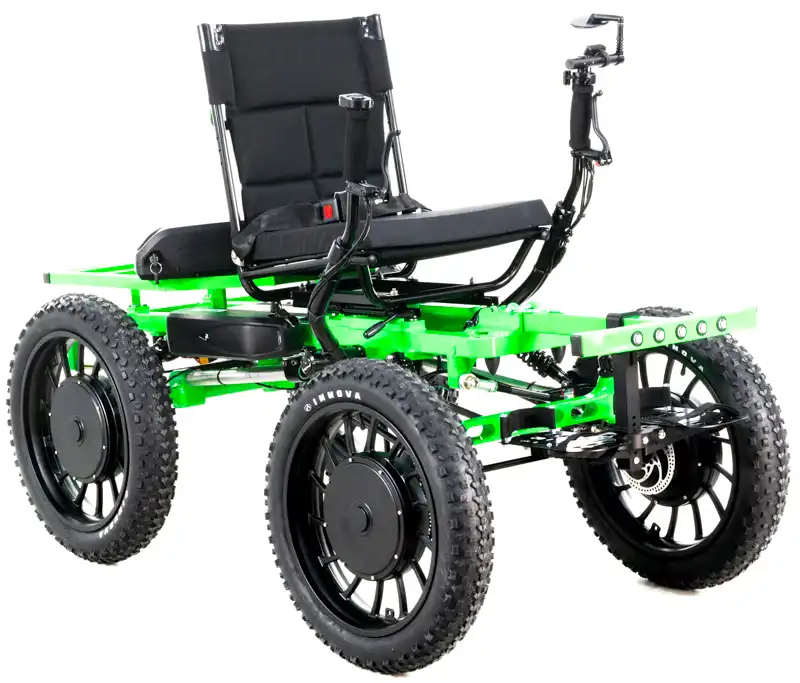

Trike Safety in Traffic: A Beginner's Deep Dive
Published on 04/09/2025
So youíve got your new recumbent trike! Congrats! Whether you're rolling around the block or planning your first ride into town, itís important to understand how to ride safely around cars. Unlike traditional bikes, recumbent trikes sit lower to the ground, which can make visibility and road presence a little trickier. But donít worry, hereís your beginner friendly blueprint for staying confident and safe.
Visibility: Be Seen, Be Safe

Why it matters: Drivers are used to looking for upright cyclists. Trikes sit lower, so you need to make yourself stand out.
What to do:
Safety Flag: Tall, bright flags fluttering above your head make a huge difference. Some brands come with a flag, if it doesn't, add one ASAP. We have a wide selection of flags that are available to choose from. You can view them here.
Lights, Day and Night: Use a flashing white light in front and red in the back, even during the day. Many riders add side wheel lights or LED strips to boost their "wow" and safety factor. To view our headlight options click here. To view our tail light options click here.
Reflective Materials: Add reflectors or high-visibility tape to your seat, fenders, and helmet. Reflective ankle straps are small but powerful when pedaling.
Positioning & Movement: Ride Like a Pro
Why it matters: Trikes handle differently than two-wheelers. Theyíre wider and more stable, but you need to claim your space smartly.
What to do:
Stay Straight and Predictable: Avoid swerving or sudden changes in direction. Hold a straight line so drivers can anticipate your movement.
Use Your Lane Wisely: On narrow roads, it's safer to ride further into the lane (even "taking the lane") than being squeezed by a car passing too closely.
Watch for Road Hazards: Trikes donít bounce over potholes the way bikes can. Avoid glass, gravel, or storm drains, especially near the edge of the road.
Awareness: Ride with Confidence and Clarity

Why it matters: You canít control what others do but you can stay alert and prepared.
What to do:
Install Mirrors: Bar-end or helmet-mounted mirrors help you track traffic behind without craning your neck.
Make Eye Contact: At intersections or crosswalks, look directly at drivers. A nod or wave can confirm theyíve seen you.
Avoid Distractions: No headphones, especially when you're still getting used to how your trike handles in traffic. Save the playlist for a quieter trail.
Route Planning: Choose Comfort Over Chaos
Why it matters: The road you choose can make or break your experienceóespecially early on.
What to do:
Start on Low-Traffic Roads: Look for bike-friendly streets, neighborhood roads, or bike paths. Some areas even have maps just for cyclists and trikers.
Time Your Ride: Avoid riding during rush hour. Early mornings or midday weekends are usually calmer.
Practice First: Do a few trial runs in quiet areas before heading into downtown or busier roads.
Pre-Ride Prep: A Little Check Goes a Long Way
Why it matters: A mechanical issue in traffic is no fun, especially when you're new to riding.
What to do:
Check Your Brakes: Make sure they engage smoothly and stop you quickly.
Inspect Your Tires: Look for wear, punctures, or low pressure.
Secure Your Gear: Make sure your lights, mirrors, flag, and bags are tightly mounted and not rattling loose.
Final Words for New Trikers
Your trike is a comfy, capable vehicle, and youíre not limited to just trails or quiet streets. With some preparation and smart habits, you can feel at home in traffic too. Donít rush yourself, take the time to build confidence, know your trike, and enjoy the ride. Before long, youíll be cruising with ease.




